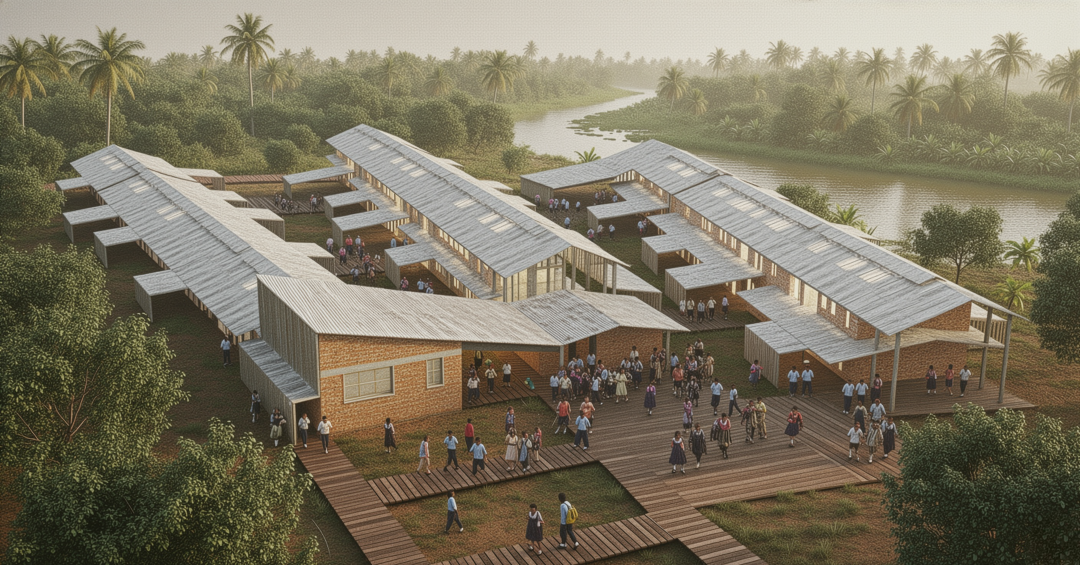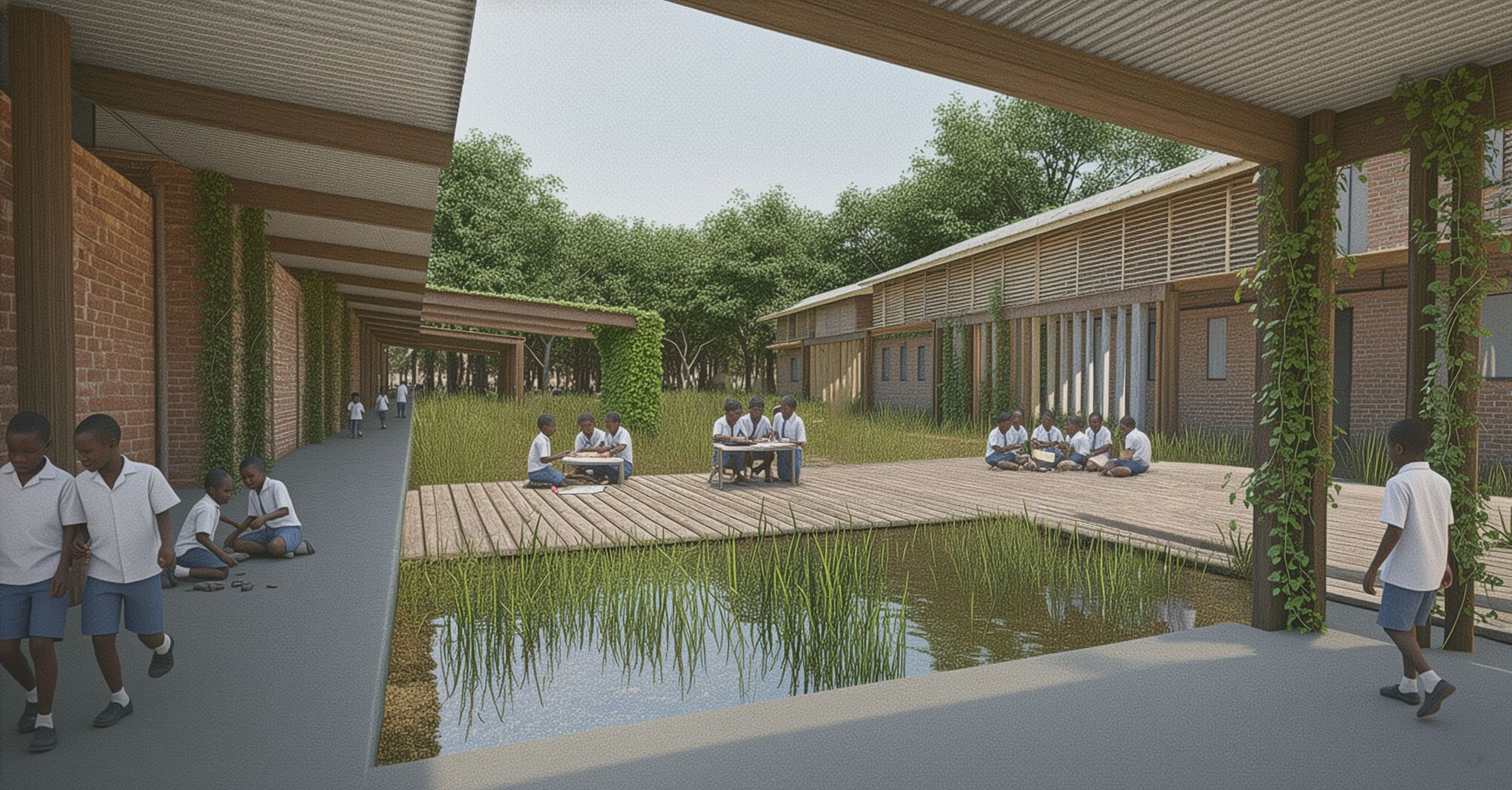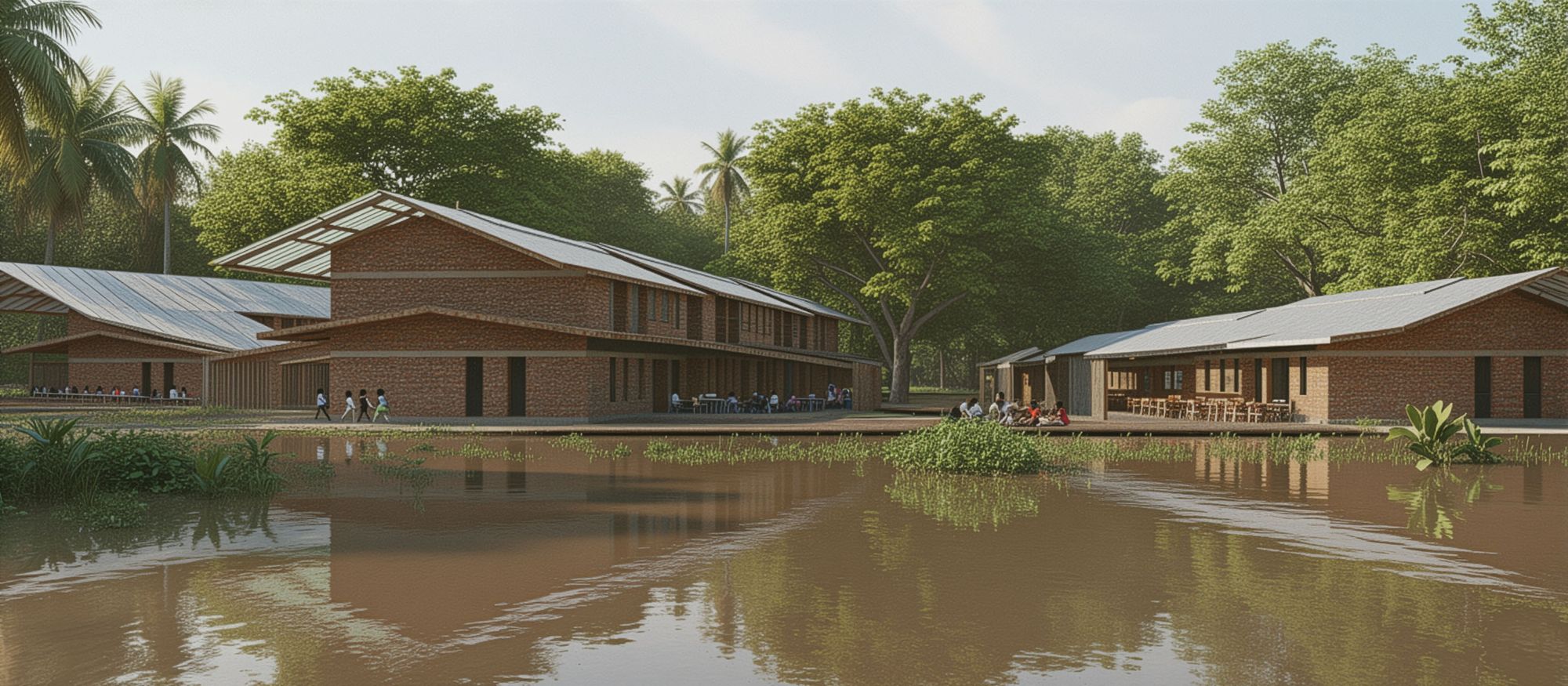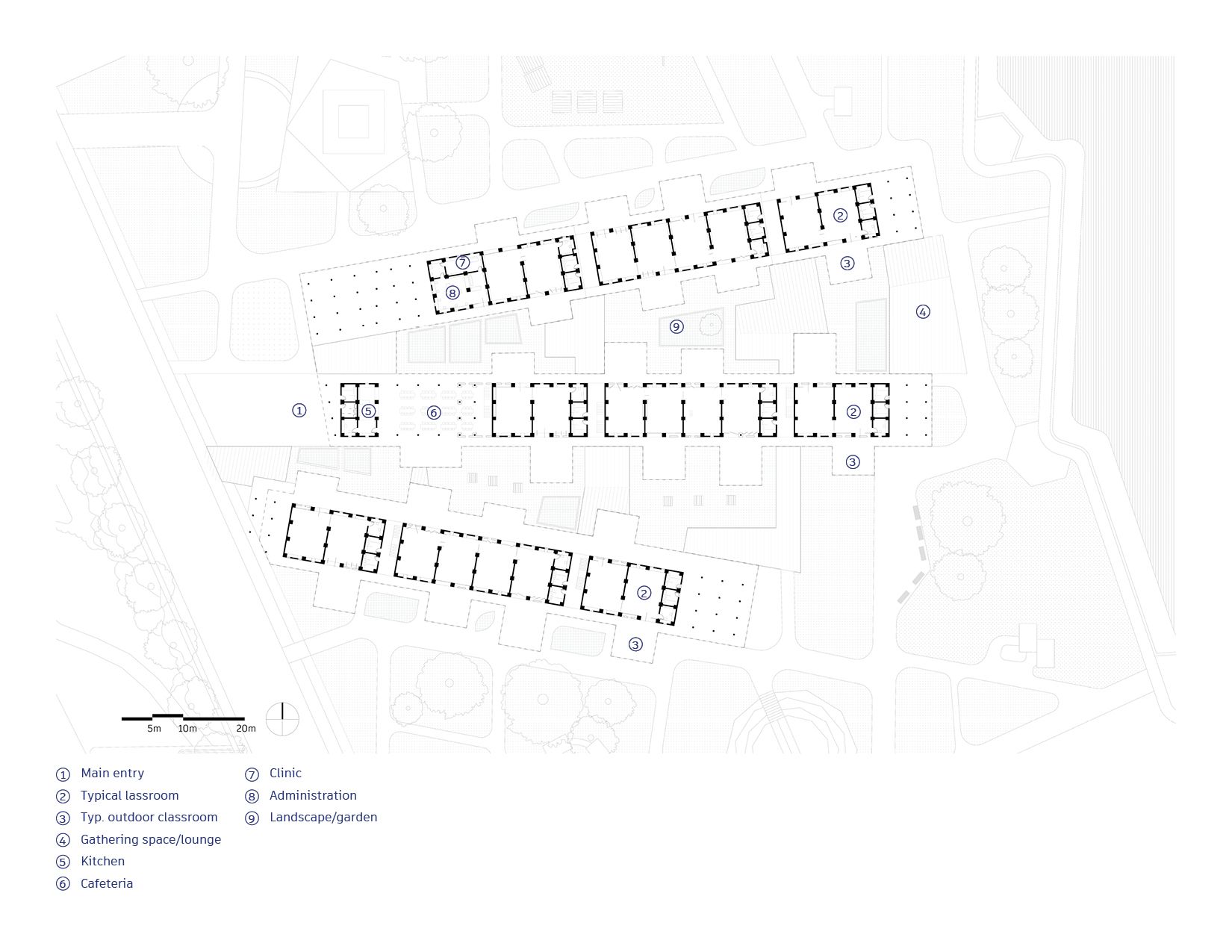
ANAM CITY SCHOOL Anam NG
The Anam City School is a five-block, eight-classroom campus designed to serve children from four surrounding remote villages of Ebenebe, as part of the Anam City Masterplan, the school embodies the masterplan’s vision of building community infrastructure that is both resilient and self-sustaining.
To address difficult seasonal access, staff housing was integrated into the campus, enabling teachers and staff to live on-site rather than travel along flood-damaged roads during the rainy season. Essential services were also provided, including intermittent power via generator, a borehole for clean water, and a library with over 1,000 donated books—resources rarely available in underfunded rural schools.
The school is further sustained by its integrated farming system, cultivating rice, plantain, yams, cassava, and managing poultry, goats, and fish ponds. Harvests are divided between the school’s free feeding program and revenue generation for operations, ensuring resilience and reducing dependency on external support.
As part of the Anam New City project, the school represents a working prototype of the larger “Rurban” model—an approach to African development that couples hardware (built environment and landscape systems) with software (social and cultural operating systems). This model seeks to merge urban densities of opportunity with rural strategies for productive landscapes. By embedding social, ecological, and technological (S-E-T) parameters into its framework, the Anam City Masterplan redefines sustainability as viability, rooted in affordability, resilience, and cultural adaptability.
2011
Anam, Nigeria





